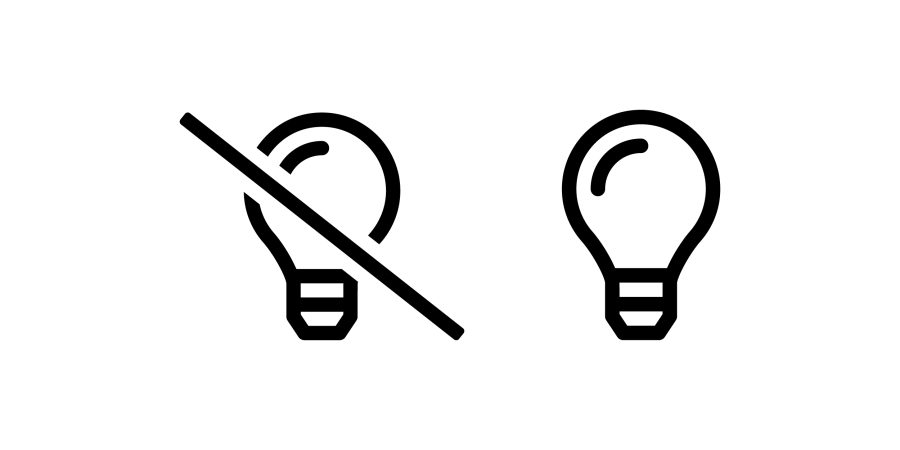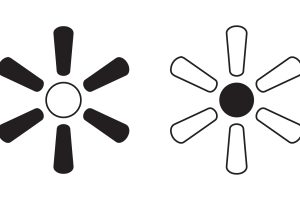Introduction
Electricity is the energy generated by the flow of electrons. A basic electric circuit consists of a Conductor, the actual flow of electrons (Current), an electric potential difference to cause the electrons to move (Voltage) and some type of Resistance. The circuit can be interrupted with a switch.
Power Lines are normally located above ground, however, public pressure has forced more of them underground. They are generally better underground in every single way, except for cost and ease of maintenance.
- Underground is better because it avoids clutter of overhead wires and protects the lines from UV rays, snow, wind, and other potentially damaging conditions.
- When the service is connected to the building via an above ground wire, the wire must be 12’-0” above the ground. Local jurisdictions may dictate more or other specific requirements.
- Because electricity does not depend on gravity, there is a lot of flexibility with where it is laid out and how the building is located in respect to the utility. Regardless, total distance should be minimized, but considerations like slope are not a worry.
Standard Electricity For Applications
- 120/208V – Three Phase = Small Commercial applications
- 120/240V – Single Phase = Residential
- Higher Voltage – Three Phase = Industrial
Equations
Amp: Unit flow of electrons in a conductor
Energy (E): The product of power (P) and time (T), also sometimes called Work
- E = P * T
Power: Is the rate at which work is done or the rate at which energy is used. In electric circuits, power is expressed in units of Watts. In DC circuits, wattage is the product of voltage (V) and current (I). A watt is the amount of power in a circuit when voltage (V) is one volt and current (I) is one amp.
- P = I * V
PIE = Power (P) = Current (I) * Electromotive Force (E).
- P = I * E
Voltage (V) = Electromotive force (E)
DC vs AC
AC Current = Alternating Current
- AC Current is the most common form of electricity used in buildings and residential homes.
- Electrical service is provided by the utility company and it is the owners responsibility to install and pay for wiring, metering, transformers, and distribution beyond the point of service. This includes upkeep and maintenance, where the electrical company will not touch the homeowners wiring.
- It’s used in homes because it’s easy to transmit over long distances, and it’s cheaper and easier to generate than direct current (DC).
- AC is also relatively safe because its constant reversals of direction cause muscles to spasm, making it easier to pull away from the source of the current.
DC Current = Direct Current
- DC current has electrons going in one direction.
- DC current is used in many things that have a battery, such as cellphones and laptops. These will typically have an AC adapter that converts from AC to DC.
- DC has greater efficiency over longer distances, so it may be used in power lines to transmit power over very long distances. Normal city lines will typically be AC as power plants typically generate AC.
- OHM’S Law for DC Circuits: States that the current in a circuit is directly proportional to the voltage and inversely proportional to the resistance.
Circuitry

There are different ways to get the electricity through the wire to the object you are trying to electrify, this is circuitry. In the diagrams above you can see the difference in lighting
Series Circuit: The loads are placed in the circuit one after another.
- Not used in construction/buildings because if one light goes out, it ruins the entire circuit.
- Similar to the Christmas light issue where one light goes out it will kill a majority of the line.

Parallel Circuit: The loads are placed between the same two points. The voltage remains the same, but the current is different across each load.

Series-Parallel: A combination of both series and parallel; essentially setups a parallel circuit with series within it.
Switchgear
Switchgear: Central electrical distribution system.
The switchgear is a piece of equipment which consists of an assembly of switches, circuit breakers, and cables or bus ducts that distribute power to the other parts of the building.
- Transformer and metering are often included in the switchgear.
- Usually housed in a separate room when a switchgear is required (larger buildings).
Power Quality
The power provided by an electric utility is not always a steady, regulated voltage. These surges and voltage variations can be harmful to equipment and people. Individual problems can be avoided by using surge protectors on items like computers.
- Power Condition Units: Used in larger rooms to help provide clean reliable power.
- (UPS) Uninterruptible Power Supply: Devices come in large (whole house) and small scales (surge protector size). Cleans the power and also includes a battery which can help with power outages. On a smaller scale people purchase with computers so it allows you to shut down the computer, server, etc. without damage to losing work or the equipment.
- Harmonic Current: A voltage or frequency that is a multiple of the fundamental frequency. These can have negative effects on electrical distribution systems.
- US Standard power is 60Hz, so harmonic frequencies are 120Hz, 180Hz, etc.
- Active Line Conditioning: Actively monitors the line and a computer will add an equal but out of phase voltage to cancel out harmonic currents.
Secondary Distribution
Secondary Distribution is made after the electricity gets to the panel. The wires that leave the electrical panel and head to rooms/spaces are considered the secondary distribution.
- Each circuit is protected by a circuit breaker in the panelboard.
Grounding & Interrupters
Grounding: Provides a path for fault. The ground wire and the neutral wire are both grounded at the building service entrance to either a grounding electrode buried in the earth or in the foundation or to a buried cold water pipe.
- This helps prevent a shock if someone touches a short circuit and a ground.
Ground Fault: Provides a path for fault. The current required to trip a circuit breaker is higher, and small current leaks can go unnoticed until someone receives a dangerous shock or a fire develops.
Ground Fault Circuit Interrupters (GFCI) | Ground Fault Interrupters (GFI): Are devices that can detect small current leaks. If a leak is detected, the device automatically disconnects.
- GFIs are required in locations like bathrooms and underground, as well as near other wet areas in residences
- They can be separate or part of the outlet
- GFI and GFCI are the same (no difference in technology)
Arc-Fault Circuit Interrupters (AFCI): Helps protect against the effects of arc faults by recognizing characteristics that are unique to arcing and by de-energizing the circuit when an arc fault is detected.
Wiring Devices
Wiring Devices: Are receptacles, switches, lights, and other devices normally installed in outlet boxes.
- Most common are Duplex Outlet. These are outlets designed for everyday use and objects that typically carry a 120 volt requirement/charge.
- Special devices are required for equipment that has higher requirements such as laundry machines, ovens, etc. These are typically considered more dangerous and with special voltage, will require their own circuit from the electrical panel.
- Duplex Outlet = Duplex Receptacle = Convenience Outlet (All mean same thing)
- Hard Wired: When a device is wired directly into junction boxes rather than being plugged in via a 2 or 3 prong cord.
Split Wire Receptacle: When one outlet is always powered and the other outlet is operated by a switch.
Misc Rules for Outlet Locations:
- No outlet should be located above a countertop so a cord would have to drape across an appliance or sink
- Above a countertop, no outlet can be more than 24” apart.
- At least two 20 Amp outlets in a kitchen, pantry, breakfast room, and dining room.
- Normally mounted 12-18” above the floor, but at least 15” is required for ADA compliance. This is to the centerpoint of the bottom outlet as it’s a reach consideration from wheelchairs.
Which way is considered “up” for an outlet?
Voltage Delivery to Building
There are many different levels of voltage available for a building. Sometimes it is cheaper for the building to buy higher voltage from the city and then provide the transformer to then step the voltage down. (instead of buying lower voltage).
- The most common voltage is 120/240 V, single phase, three wire system. (consists of two hot wires).
Transformers: Step down or up (AC) alternating current voltage.
- The utility company typically steps down electricity to 120/240 for a lot of residences.
- Transformers generate a lot of heat and therefore should be located on the exterior of a building.
- Transformers also pose a fire risk and should be separated from the other spaces.
Metering
A meter must be installed near the service entrance. For single family homes, only one meter is needed. For multi-family residences, multiple meters are installed so that individuals can pay for their own electricity use and it tracks each individual ‘unit’ (apartment, condo, etc). This encourages responsibility for their used energy.
- The most common meter is the watt-hour
- Maximum Interval Demand: The maximum amount of electricity used in a period of time
- Load Factor: Average power use / peak power use
- Peak Demand: During the day, there is a peak demand from the electricity company. They charge more during this time.
- You occasionally in urban areas will get notices from the company to help curb electrical use during certain heavy use times like extremely hot weather.
Load Control (Load Shedding, Peak Demand Control, Peak Load Regulation): Designing the building’s electrical system to not use as much electricity during peak hours.
- There are systems that will shut off non-essential energy uses when a certain load is reached.
- There are many design strategies for buildings to offset their electrical usage during this time, including active and passive systems.




Leave a Reply
You must be logged in to post a comment.